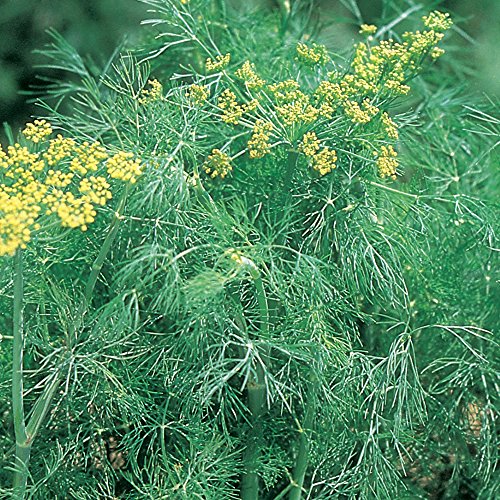
Yellow-green, ferny-looking dill is a native of the Mediterranean and southern Russia but can make itself at home anywhere. Dill grows wild in southern Europe and is cultivated throughout Europe, India, and the Americas.
An annual dill can grow year-round in the South, and Although it’s a summer plant elsewhere, it is best to grow it in cooler weather in the South.
Experts recommended seeding dill directly where you want it to grow.
If you want to start transplants, buy plants already established in containers, and do not disturb the roots when transplanting.
Dill cannot be transplanted from tiny seedlings because they will flower too quickly, which will interfere with the harvest of the leaves.
Dill can tolerate full sun, but it is best to choose a spot with afternoon shade for summer plantings. Plant dill in well-drained soil and reseed every two weeks.
Dill has a life expectancy of only a couple of weeks. You’ll have a constant supply by planting a new crop every two weeks.
Perform fertilizing dill with a slow-release fertilizer or 20-20-20 about once a month.
Thin the seedlings 10 inches (25 cm) apart, they will grow about 3 feet (1 m) high. Use the seedlings you pull up; they are tender and delicious.
If you don’t want dill to take over your garden, cut it back before the flowers drop their seeds.
Dill also grows well in containers, Boone said. Choose one at least 8 inches (20 cm) deep to accommodate a long tap root.
How To Harvest Dill
To harvest, clip fresh leaves at the stem as needed. Store in a brown paper bag in a warm room.
Use fresh dill within a week, storing it in a bouquet fashion in a glass of water, with a plastic bag over the top, in the refrigerator. The fresh leaves can be frozen in small resealable bags.
Even though harvesting dill plants is a simple process, it is essential to plant growth and foliage output.
Too much dill weed cutting can hinder the plant’s capacity to bounce back rapidly.
If you don’t have a lot of dill, use the elder leaves first. Snip the leaves with a pair of clean, sharp scissors.
Harvesting Dill Seeds
How To Harvest Dill From Seed, after the blossoms have faded, the 4 to 5mm long dill seeds begin to sprout.
Wait until the blossoms have produced seeds, and the seeds have begun to turn brown before gathering dill seeds. The seeds are likely ready for harvest at this point.
Carefully place a paper bag over the flower heads’ seed areas. You might need to bend the stem to prevent dropping too many seeds.
The seed head should fall into the bag once you cut through the stem’s bent point.
Repeat this process until you’ve collected all the heads you want, and then set the bag somewhere so the heads can dry.
When the seed heads are dry, split them up between your palms to release all the seeds.
Pour the herb and seed mixture onto a flat surface to separate the seeds from the chaff. Then, gently blow over it.

Here is a list of some dill varieties you can choose from.
- Long Island Mammoth, also known as Mammoth dill, is the largest growing dill and can reach 48 inches in height. Florida gardens, including butterfly gardens, benefit from this variety.
- The elephant dill has aromatic foliage and flowers late in the season. The plant grows tall, which means that it produces a lot of foliage and flowers.
- Dukat has the most essential oils and the sweetest flavor. It will reach a height of about 3 feet. Because this is an heirloom variety, seeds can be saved for next year’s plants.
- The bouquet grows to a height of 30 to 36 inches. Pickles may be made with this variety if you are interested in making them.
The bouquet produces a lot of seeds early and abundantly.
In addition to reseeding itself without any effort on your part, this is another heirloom variety.
- Delikat grows densely and produces a high yield of flavorful leaves.
Plants reach only 10 to 24 inches in height, which makes them great for containers.
- Fernleaf grows to only 18 inches tall and is another excellent container plant.
In addition, this cultivar is slow to bolt or go to seed, producing more foliage for extended periods.
- Grandma Einck’s grows up to 24 inches, produces a strong aroma, and bears large flowers. It is also an heirloom variety that self-seeds.
Be patient, and don’t judge seeds as unviable if they don’t germinate immediately.
Pests
Besides being tasty, dill is a host plant for black swallowtail butterflies.
If you see caterpillars on your dill, plant more so both you and the caterpillars will have enough food.
Fennel and parsley plants are also members of the same plant family as Black Swallowtail butterflies.
Dill Uses
Soups, stews, sauces, pickles, salads, vegetables, fish, eggs, and pickled items can all be prepared using fresh or dried dill leaves and seeds.
In cooked dishes, fresh dill should be added just before serving, just before the meal is served.
Also, dill leaves are commonly added to soft cheeses, sandwiches, or salads.
Last update on 2024-07-26 / Affiliate links / Images from Amazon Product Advertising API



























